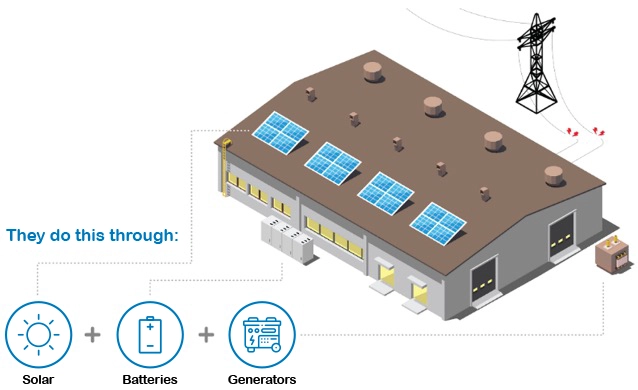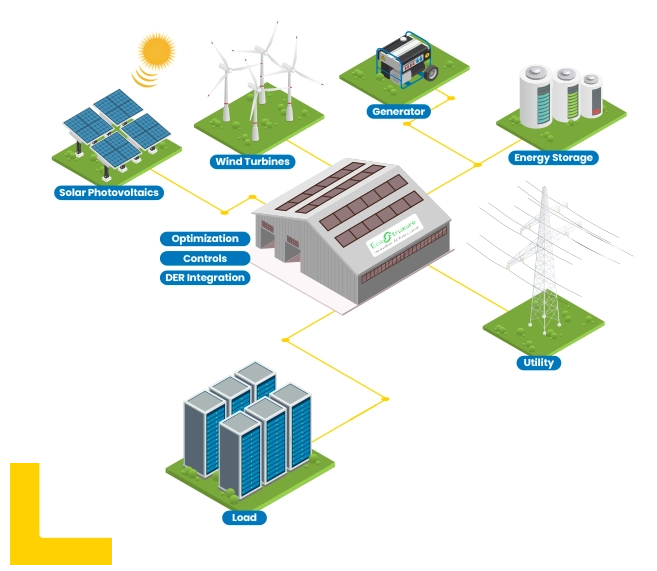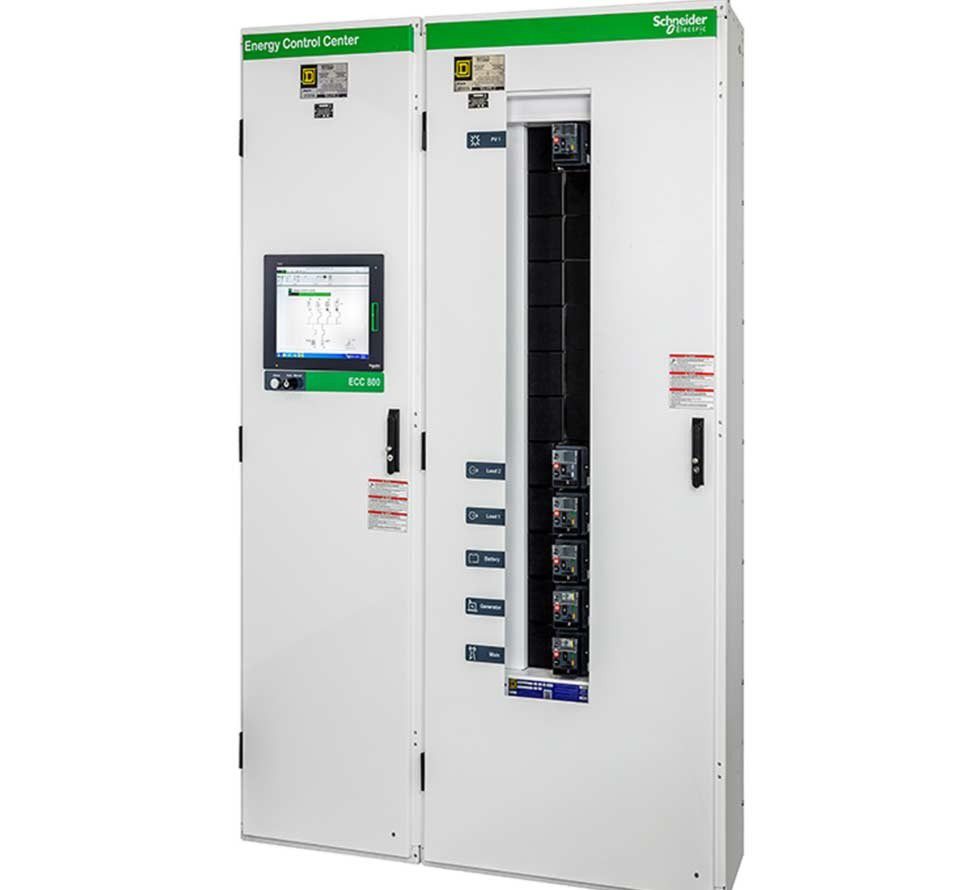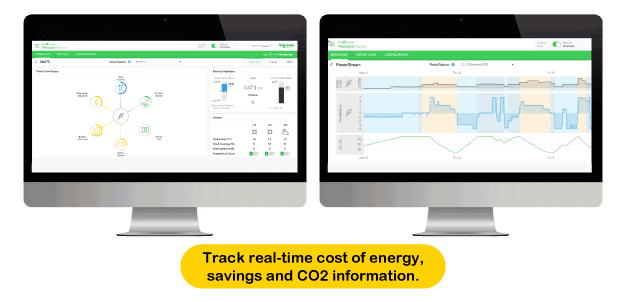Microgrids

Improve Resiliency, Lower Electricity Costs, and Use Cleaner Energy
A Microgrid is an integrated energy system consisting of interconnected loads and distributed energy resources (DER), controlled as a single entity and operating in parallel with the grid or in an intentional islanded mode.
Or to say it another way: Microgrids are all about helping customers use different energy resources on their sites.
Through partnership with Schneider Electric, we can even help you build one with zero upfront cost. Our expertise in integrating multiple electrical control systems means we can ensure a successful implementation for your site.
Microgrid System Benefits
- • Electricity produced by onsite generation sources can be used to power your facilities in times of disruption or even when the price of electricity is high.
- • It ensures communities’ resiliency even when utility power disruptions occur.


Remote Monitoring for Telecommunications
A microgrid co-locates electricity generation and consumption. Unlike the utility grid, which generates electricity in a centralized power plant and then distributes it along hundreds of miles of transmission lines, a microgrid generates electricity on-site.
For electricity generation, microgrids typically use a combination of back-up diesel generators and renewables such as solar panels. They can also incorporate battery systems to store electricity and deploy it during outages or when grid demand spikes.
Our intelligent software controls can automatically switch the facility between the utility grid and the microgrid based on factors such as power reliability and cost efficiency.
Energy Control Center
In order to manage the microgrid, an Energy Control Center combines electrical distribution equipment and industrial controls into an intelligent Power Management System (PMS).
This PMS is pre-wired, assembled, and factory tested to deliver autonomous microgrid solutions that manage multiple energy sources and prioritized loads.


How Do Microgrids Work?
With this cloud-based platform, you can connect, monitor and control your facilities Distributed Energy Resources (DERs) to optimize economic performance, sustainability, and resilience.
EcoStruxure Microgrid Advisor provides access to monitor microgrid data and associated KPIs, and it uses predictive algorithms to enable your microgrid’s optimization strategy.
The local edge controller interfaces the DER for monitoring and control and enables sites to run real-time use cases, example frequency regulation, or demand response.
Types of Microgrids



